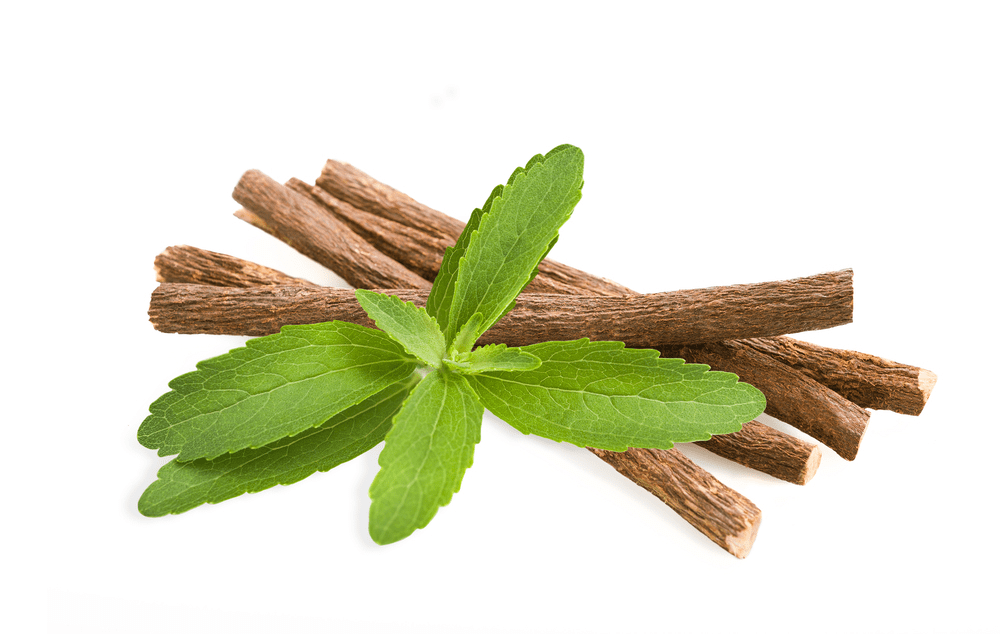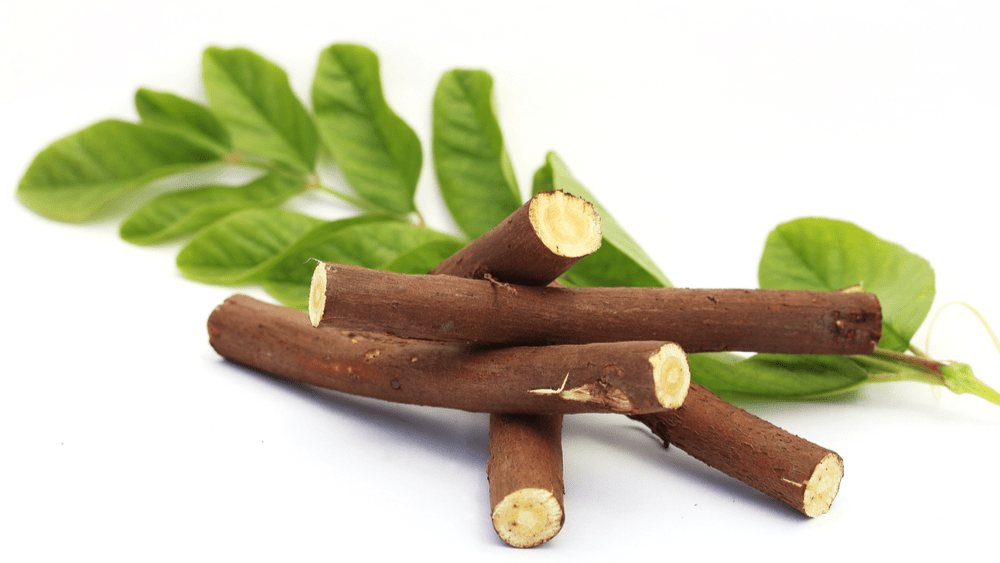Pharmacognosy of Liquorice, Biological source, morphology, chemical constituents, uses, adulterants and substitutes of Liquorice…
Synonyms: Glycyrrhiza, Liquorice root, Mulethi
Biological source: It consists of dried roots and stolons, whole or cut, peeled or unpeeled of Glycyrrhiza glabra Linn and other species of Glycyrrhiza.
Family: Leguminosae (Fabaceae)
Geographical source: Liquorice obtained from wild plants and from semi-wild plants cultivated in Iraq, Syria, Afghanistan, Spain, Sicily and England.
| Sr. No. | Variety | Biological source | Characters |
| 1. | Spanish liquorice | Glycyrrhiza glabra var. typica | It is about 1.5cm high bearing typical Papillion-aceous flowers of a purplish blue colour. The underground portion consists of a long root and thin rhizomes or stolons. The principal root is divided just below the crown into several branches which penetrate the soil to a depth of 1m or more. A considerable number of stolons are also given off which attain a length of 2m but run nearer the surface than the root. The plant is grown in Spain, Italy, England, France, Germany and USA. |
| 2. | Russian liquorice | G. glabra var. glandulifera | It is obtained in the wild state of Southern Russia. The underground portion consists of a large rootstock. It bears numerous long roots but no stolons. |
| 3. | Persian liquorice | G. glabra var. violaceae | It is collected in Iran and Iraq. It bears violet flowers. |
Cultivation and Collection:
The liquorice is cultivated in Western Europe but the Russian variety and Persian varieties are obtained from wild plants in Russia and Iran. Spanish variety is cultivated abundantly in Spain and Italy. The plant usually grows well in deep sandy soil but the soil should be fertile and near streams. The soil should be well prepared and added with farmyard manures. Liquorice is usually propagated by replanting young pieces of stolons in the month of March.
The stolons may be grown from seeds. The roots are harvested 3 to 4 years after plantation or when they are sufficiently grown. The underground organs are developed to a sufficient extent by the end of the third or fourth year. Then they are dug out in the month of October and washed with water. Some roots are peeled and cut into short lengths before drying. The drug is sun-dried and then shade-dried. Many parts of the drug are now used unpeeled. Sometimes sticks or blocks of liquorice roots are made. This is prepared by the process of decoction, the liquid being subsequently clarified and evaporated to the consistency of the soft extracts. The latter is made into blocks or sticks.

Macroscopical Character:
Colour: Unpeeled drug is yellowish-brown or dark brown in colour externally and yellowish coloured internally but peeled liquorice is pale yellow in colour.
Odour: Typical odour, faint and characteristics.
Taste: Sweet.
Size: Stolons are several meters in length and are cut in pieces having 20-50 cm length and 1 to 2 cm diameter fragments.
Shape: Cylindrical pieces sometimes straight or irregularly peeled or unpeeled.
Fracture: Fibrous (bark), splintery (wood).
Chemical Constituents:
Liquorice owes most of its sweet taste due to glycyrrhizin or glycyrrhizic acid which is potassium and calcium salt of glycyrrhizinic acid which has a triterpenoid structure.
Other hydroxyl and deoxy triterpenoid acids related to glycyrrhetinic acid or glycyrrhizic acid have been isolated; the C-20 epimer of glycyrrhetinic acid is named liquidity acid. The yellow colour of liquorice is due to flavonoids which also have an anti-gastric effect. Flavonoid-rich fractions included liquiritin, isoliquertin (a chalcone) which occurs as a glycoside and during drying partly converted into liquiritin, liquiritigenin and isoliquiritigenin.
Isoliquiritigenin is reported to be an aldose reductase inhibitor and may be effective in preventing diabetic complications. Another active constituent of liquorice is a polysaccharide with a pronounced activity on the reticuloendothelial system. The root also contains 5-15 per cent of sugars about 1-2 per cent of asparagine (amide of aspartic or amino succinic acid), 0.04 to 0.06 per cent volatile compound, β-sitosterol, starch, protein, bitter principles (glycyramarin). The latter is particularly abundant in the outer tissue and is therefore largely removed in the peeled variety of liquorice. Carbenoxolone is an oleandane derivative prepared from glycyrrhiza and posses significant mineralocorticoid activity.
Chemical Test of Liquorice
- When 80 per cent sulphuric acid is added to the thick section of the drug or to the powdered drug it shows deep yellow colour.
- A dark colour appears when an aqueous extract of the drug is treated with a 5 per cent ferric chloride solution (due to phenolic compounds).
- Take aqueous extract and treat it with 5ml dilute potassium permanganate solution. Decolourisation of potassium permanganate indicates the presence of reducing sugars.
- An aqueous extract of the drug is added to the lead acetate reagent, a white precipitate is formed (due to the presence of phenolic and flavonoid compounds).
- When an aqueous extract of the drug is added with mineral acid a reddish-orange colour appears which decolorizes upon the addition of alkali.
- When the powdered drug is shaken with water a stable foam produces which indicates the presence of saponins.
Uses of Licorice Root
Traditionally it is used as a flavouring agent, demulcent and mild expectorant. It is used in the preparation of cough syrups. The flavonoid content of liquorice i.e. Isoliquiritin possesses anti-gastric activity so used in peptic ulcer treatment for healing purposes (in deglycyrrhized liquorice form known as DGL). Isoliquiritin also have antispasmodic activity. The glycyrrhetinic acid possesses minerocorticoid activity so it is also used in the treatment of rheumatoid arthritis, and inflammation of Addison’s disease but at a high dose it causes hypertension (due to sodium retention, water retention and electrolyte imbalance). Glycyrrhizin has an anti-inflammatory effect so uses in the treatment of swelling. Ammoniated glycyrrhiza is used as a flavouring agent in beverages, confectionaries and pharmaceutical industries. Another use of liquorice is as a foam stabilizer in fire extinguishers.
Adulterant and Substituent:
Manchurian liquorice is derived from Glycyrrhiza uralensis which is chocolate brown in colour and contains glycyrrhizin. Glycyrrhiza glabra var glandulifera also known as Russian liquorice is used as the substituent. It contains long roots and no stolons. It is purple in colour.
Make sure you also check our other amazing Article on: Pharmacognosy of Opium
